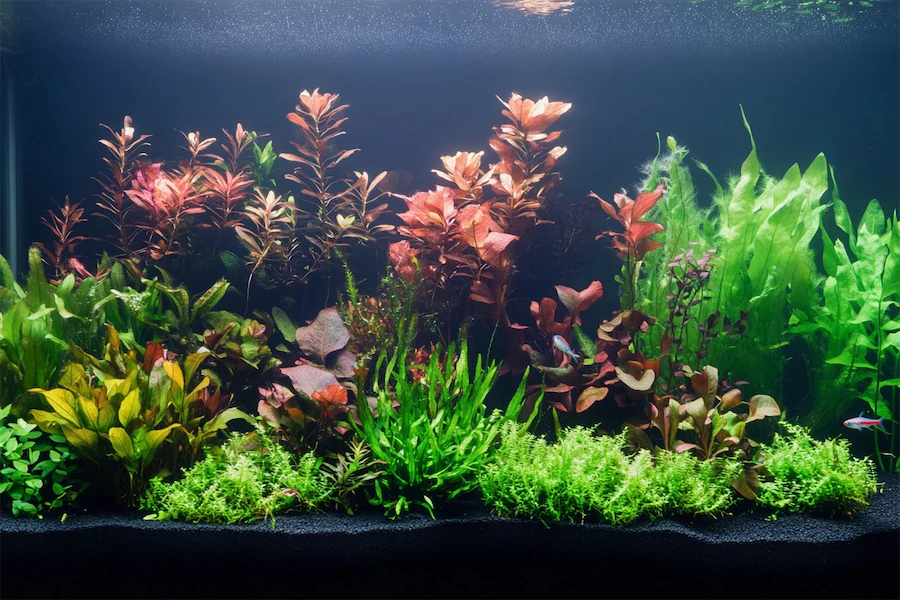An aquatic plant garden is a curated water feature that incorporates a variety of water-loving plants, creating a serene and biodiverse ecosystem. These gardens can range from expansive ponds to compact container setups, offering flexibility for different spaces and preferences.
History and Origins of Aquatic Plant Gardens
The cultivation of aquatic plants dates back to ancient civilizations. The Egyptians adorned their temple ponds with sacred lotus flowers, while in Asia, water gardens featuring koi ponds and water lilies have been integral to cultural landscapes for centuries. These historical practices highlight the longstanding human appreciation for integrating water and plant life.
Key Features of Aquatic Plant Gardens
- Diverse Plant Types: Aquatic gardens typically feature a mix of plant categories, including:
- Floating Plants: Such as water lilies (Nymphaea spp.) and water poppies (Hydrocleys nymphoides), which float on the water’s surface, providing shade and reducing algae growth.
- Submerged Plants: Like anacharis (Egeria densa), which grow entirely underwater, aiding in oxygenation and maintaining water clarity.
- Marginal Plants: Including cattails (Typha spp.) and pickerelweed (Pontederia cordata), which thrive at the water’s edge, offering habitat for wildlife and adding vertical interest.
- Wildlife Habitat: These gardens support various aquatic and semi-aquatic species, promoting biodiversity and ecological balance.
- Aesthetic Appeal: The combination of water and plant life introduces movement, reflection, and a tranquil atmosphere to any setting.
Applications of Aquatic Plant Gardens
- Residential Landscaping: Homeowners can enhance their outdoor spaces by installing ponds or water features adorned with aquatic plants, creating focal points that attract wildlife and offer relaxation spots.
- Public Parks and Botanical Gardens: Aquatic plant gardens serve educational and recreational purposes, showcasing plant diversity and demonstrating sustainable water management practices. Notable examples include the Aquatic Garden at Kew Gardens in London and the Mizunomori Water Botanical Garden in Japan.
- Conservation Efforts: Cultivating native aquatic plants can aid in preserving endangered species and restoring natural habitats, contributing to environmental conservation.
Considerations When Creating an Aquatic Plant Garden
- Climate and Hardiness Zones: Select plant species suited to the local climate to ensure longevity and reduce maintenance challenges.
- Water Quality and Depth: Different plants have specific water depth and quality requirements; understanding these needs is crucial for a thriving garden.
- Maintenance: Regular tasks include controlling invasive species, managing algae growth, and ensuring the health of both plants and any incorporated aquatic life.
Conclusion
Aquatic plant gardens blend the soothing presence of water with the beauty of diverse plant life, creating spaces that are both visually captivating and ecologically beneficial. By thoughtfully selecting plant species and designing with local conditions in mind, these gardens can become sustainable sanctuaries that enrich both private and public environments.
